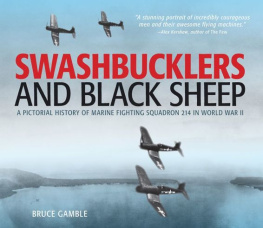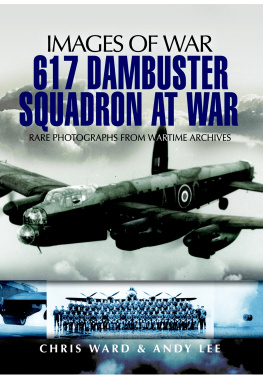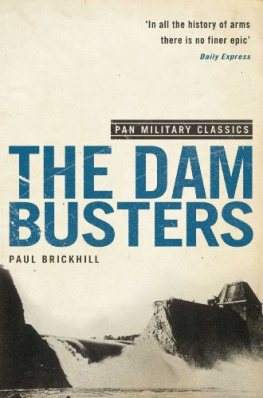By the same author
The Men who Breached the Dams
Beyond the Dams to the Tirpitz
The Later Operations of the 617 Squadron
Alan Cooper
First published in Great Britain in 1983 by
William Kimber and Co. Limited, Godolphin House,
22a Queen Annes Gate, London, SW1H 9AE
Published in paperback format in 1991 by Goodall Publications
Reprinted in this format in 2013 by
PEN & SWORD AVIATION
An imprint of
Pen & Sword Books Ltd
47 Church Street, Barnsley
South Yorkshire
S70 2AS
Copyright Alan W. Cooper, 1983, 1991, 2013
9781783469093
The right of Alan W. Cooper to be identified as Author of this work has been asserted by him in accordance with the Copyright, Designs and Patents Act 1988.
A CIP catalogue record for this book is available from the British Library
All rights reserved. No part of this book may be reproduced or transmitted in any form or by any means, electronic or mechanical including photocopying, recording or by any information storage and retrieval system, without permission from the Publisher in writing.
Printed and bound in England
By CPI Group (UK) Ltd, Croydon, CR0 4YY
Pen & Sword Books Ltd incorporates the Imprints of Pen & Sword Aviation,
Pen & Sword Family History, Pen & Sword Maritime, Pen & Sword Military,
Pen & Sword Discovery, Pen & Sword Politics, Pen & Sword Atlas,
Pen & Sword Archaeology, Wharncliffe Local History, Wharncliffe True Crime,
Wharncliffe Transport, Pen & Sword Select, Pen & Sword Military Classics,
Leo Cooper, The Praetorian Press, Claymore Press, Remember When,
Seaforth Publishing and Frontline Publishing
For a complete list of Pen & Sword titles please contact
PEN & SWORD BOOKS LIMITED
47 Church Street, Barnsley, South Yorkshire, S70 2AS, England
E-mail: enquiries@pen-and-sword.co.uk
Website: www.pen-and-sword.co.uk
This book is dedicated to the memory of the men of 617 Squadron who in WWII failed to return from operations, or were killed flying with the Squadron.
They gave the dearest thing any man can give, their lives. We shall not forget them.
Introduction
Number 617 Squadron RAF became a legend in 1943 when a force of Avro Lancasters breached the Mhne and Eder Dams in Germany. The Lancasters were flown by hand-picked crews, chosen for their proven ability and skill in bomber operations. Yet the Dams Raid was only one raid, the first of nearly 100 undertaken by the squadron.
In the main they were special targets, needing special treatment and the determination of the special crews to destroy them. The targets were hard nuts to crack: viaducts, solid U-Boat pens, V-Weapon sites, German battleships, aircraft factories, etc. All needed to be illuminated, marked and bombed, often at low level, and using huge bombs of 12,000 lb or later 22,000 lbs in weight. The men who took these bombs to these targets were a special breed, their courage and skill paramount.
Wing Commander Guy Gibson VC, DSO & bar, DFC & bar, formed the squadron. His successors were men like George Holden DSO DFC, Leonard Cheshire VC DSO and two bars DFC, Willie Tait DSO and three bars, DFC and bar, Johnny Fauquier DSO and two bars DFC. The men under them had to live up to their impressive records.
By the end of World War Two the squadrons name had become more than just a legend; the Dam Busters were a part of history and an lite within the ranks of Bomber Command.
Acknowledgements
This book is based on the records and recollections of many people, and I am grateful for their co-operation and that of many institutions. A list of their names can be found at the end of this book but in particular my thanks are due to my friend Horst Muller, John Evans and to Norman Franks for his help in the presentation of this book.
My thanks also are due to the Imperial War Museum, Public Records Office, Royal Air Force Museum, Air Historical Branch, Commonwealth War Graves, Royal Air Force Records Gloucester and Adastral House, and last but not least the staff of William Kimber & Co.
CHAPTER ONE
After the Dams
Number 617 Squadron had been formed in March 1943 specifically to train for a raid on, and then finally to attack, four dams in the Ruhr Valley. This one operation, which gave undying fame to the squadron and captured the imagination of both civilian and serviceman alike, took place on the night of 16/17 May 1943.
The details of this raid I covered in detail in my first book, The Men who Breached the Dams. On that night a force of nineteen specially adapted four-engined Avro Lancasters, flew to Germany, lost eight of their number but smashed two of the dams, the Mhne and the Eder, and damaged the Sorpe. Fifty-three aircrew died that night while three others were taken captive.
Few other single operations flown by squadrons of Bomber Command are remembered so vividly as this one. The men and the squadron became known universally as The Dam Busters. For 617 Squadron, however, the dams were to become just the first of several special targets that needed special treatment.
The squadron had been formed under the leadership of Wing Commander Guy Penrose Gibson, DSO & bar, DFC & bar. When given the task he had just completed a third tour of operations, two on bombers and one on night fighters. The Dams Raid had been his 74th bombing mission since the war began.
Following the euphoria of their successful attack, 617 Squadron were stood down from operations and Guy Gibson informed that he had done enough. The award of the Victoria Cross was his reward for his superb leadership and heroism during the raid itself. He was still only twenty-four years old and now the most highly decorated operational pilot in the Royal Air Force.
The squadron had been manned by a number of men who had just completed or had nearly completed bomber tours or recently begun second tours, plus a few who had, on average, almost a third of a tour under their belt. It was obvious that with such a nucleus of experienced men with success just behind them, 617 would not be immediately disbanded and its men returned to their former units, or go off to begin instructing at Operational Training Units. The majority stayed. However Flight Sergeant Cyril Anderson and his crew decided to return to 49 Squadron on 3rd June. They did not locate their target the Sorpe Dam and had flown home with their Special Bomb. They were replaced by Flying Officer W.H. Kellaway, DSO, in from 149 Squadron at the end of the month.
The survivors of the Dams Raid who stayed on with 617 were an experienced bunch, Micky Martin, at twenty-five, held the DSO and DFC and had flown a total of 36 bombing operations since late 1941, with both 455 and 50 Squadrons. David Maltby, DSO, DFC, aged twenty-three, he and his crew had completed a tour with 106 and 97 Squadrons. Les Knight, an Australian like Martin, had a DSO and a tour with 50 Squadron behind him. He was twenty-two Another Australian was Dave Shannon, whose youthful looks belied his twenty-one years of age, (he had been only twenty on the Dams Raid, his 21st birthday occurring on 27th May, ten days later) his DSO and DFC, with a tour with Guy Gibsons 106 Squadron a tour of 36 ops.
Joe McCarthy, a member of the RCAF was in fact an American, from New York, was twenty-three, and also held the DSO and DFC. He had flown on the first 1,000 Bomber raids while still at OTU, then gone on to complete a tour with 106 Squadron, then started a second tour with 97 Squadron before being picked to fly with 617. Geoff Rice, DFC, twenty-six, had flown his tour with 57 Squadron but on the Dams Raid had had the misfortune to lose his bomb when he hit the sea on his way out to the enemy coast and had to abort. Les Munro, DSO, DFC was a New Zealander aged twenty-four. A member of the RNZAF he flew his tour with 97 Squadron. Bill Townsend, aged twenty-two, from Gloucester, had won the DFM with 49 Squadron, and been awarded the Conspicuous Gallantry Medal for the Dams attack, and had recently been commissioned. Ken Brown, a Canadian, had also won the CGM for the Dams Raid. He was twenty-two and had only just begun a tour with 44 Squadron before coming to 617. Two pilots who had missed the actual raid, had been Harold Wilson, who had joined the squadron from 57 Squadron and who was twenty-eight, and 23-year-old Bill Divall, also in from 57 Squadron.

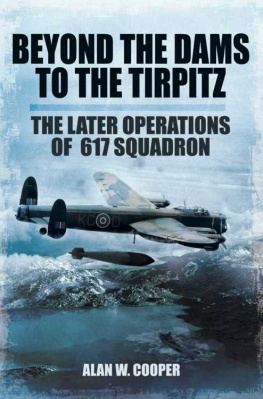



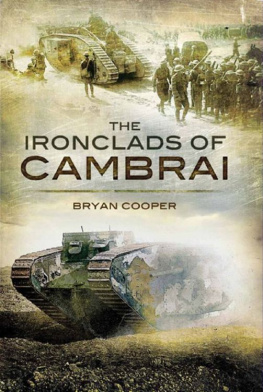


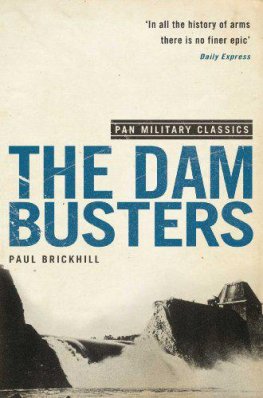

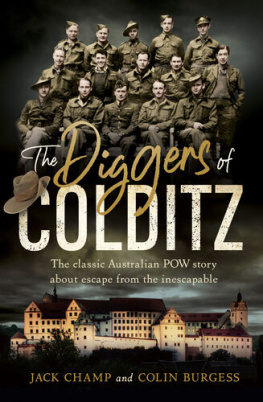
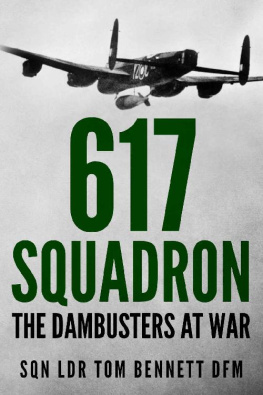
![Bar Wing Commander Guy P. Gibson VC DSO - Enemy Coast Ahead [Illustrated Edition]](/uploads/posts/book/180257/thumbs/bar-wing-commander-guy-p-gibson-vc-dso-enemy.jpg)



